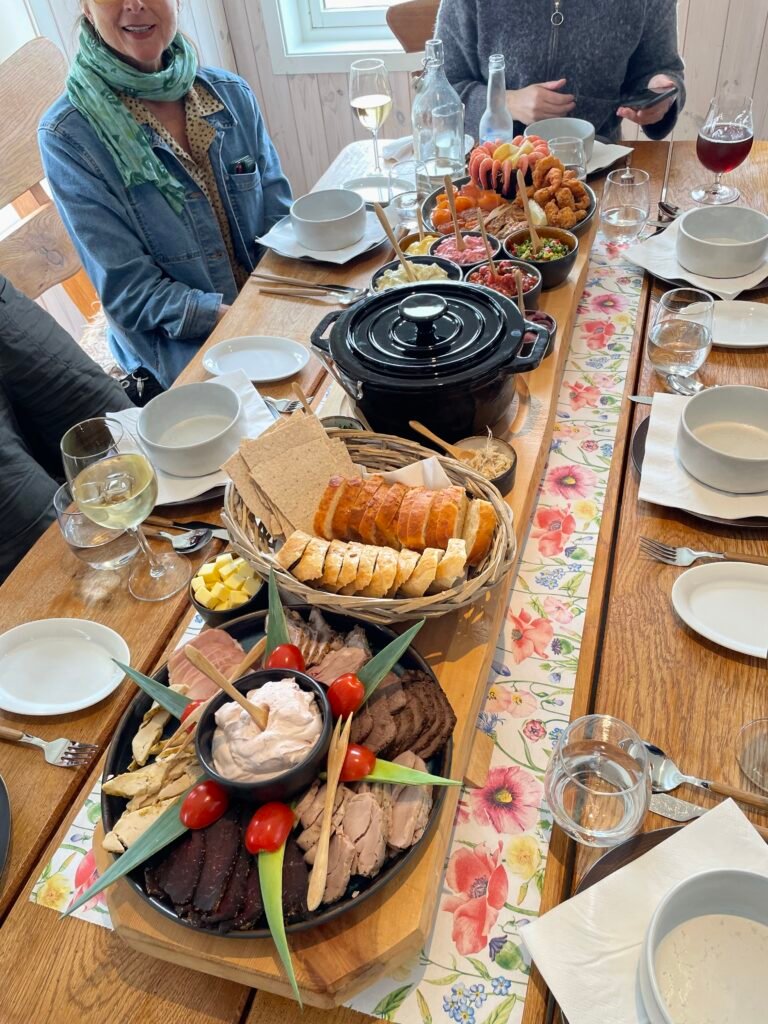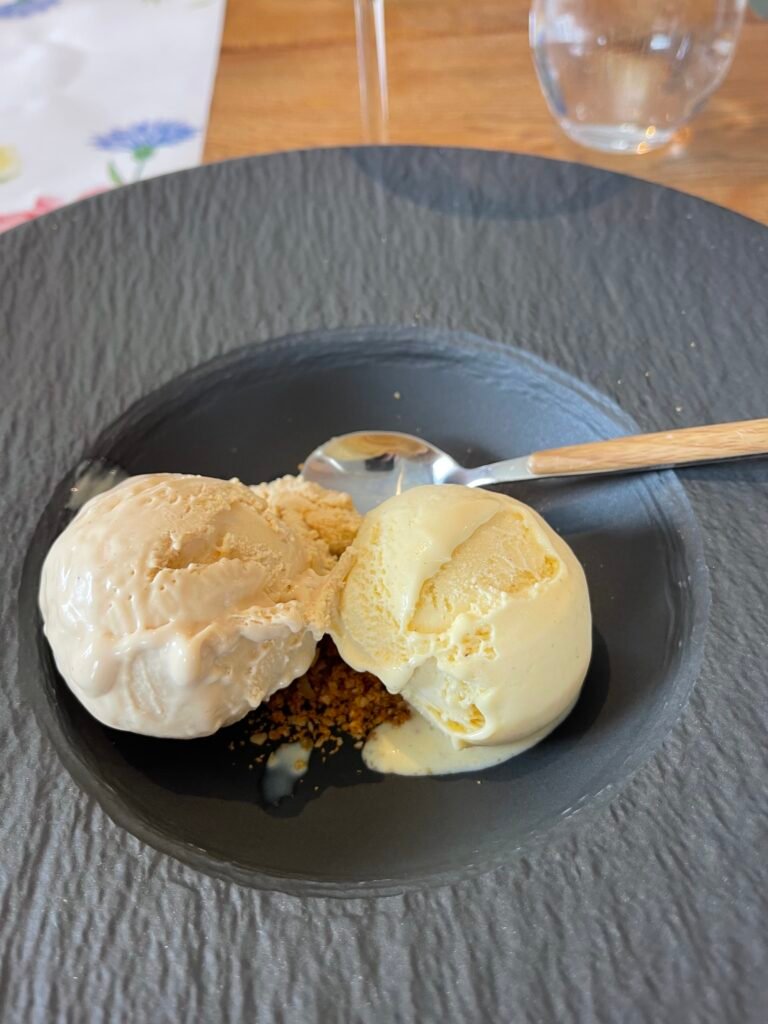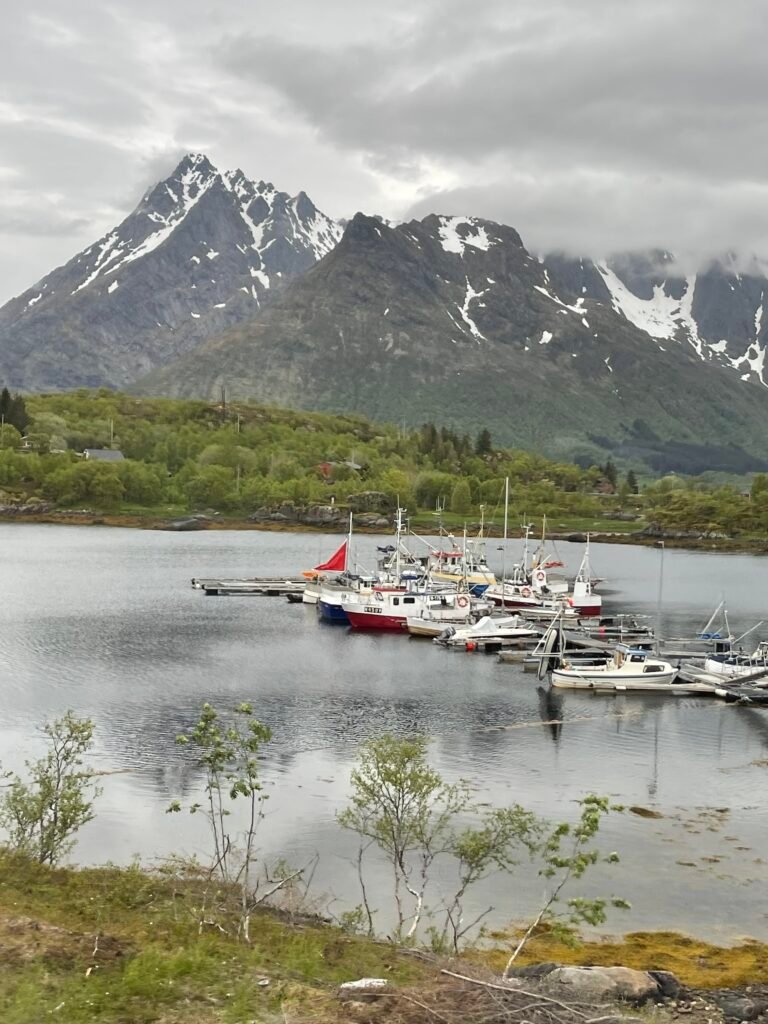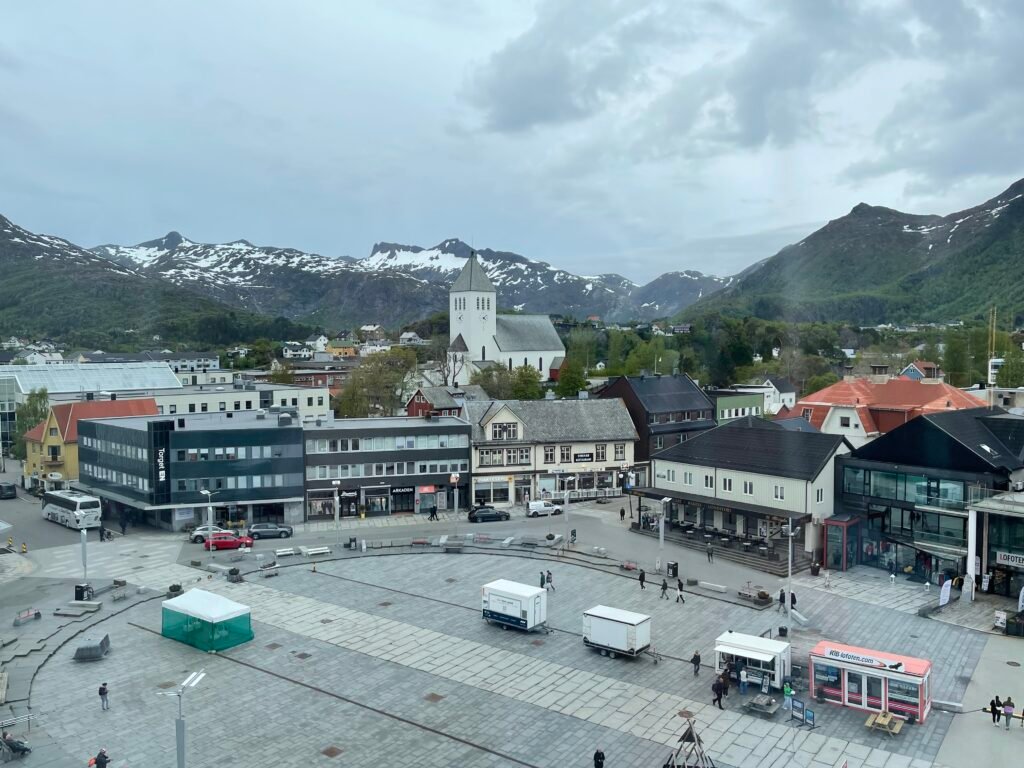Accommodations: Thon Lofoten Hotel
Fish farming in Norway is big business and salmon is the number one farmed animal in Norway by far. Fish farming in Norway is prolific along most of the country’s coastline, producing more than 1.5 million tons of fish per year, almost all of which is exported.
Mortality rate for the fish raised on the farms is very high, and the cause of the mortality rate is unknown. It is thought that the stressful handling of the fish while they treat the fish for lice can cause mass mortality. Disease is another cause of the fish mortality, although vaccinations have helped.
Fish farms are a source of controversy and they can impact the environment negatively. Escapees from fish farms can introduce genes into the wild and potential change the genetic makeup of other species. Also, escaped fish compete with other fish for food thus impacting the other fish significantly.
The treatment for sea lice can affect the environment and the food that the fish are fed in the farms, as well as their feces, can pollute the seabed and deplete the oxygen that other marine life need to survive. Farmed fish can give out more toxic emissions into the environment than a town of 50,000 people. Also, wherever a fish farm is located in the ocean, the ocean floor is ruined because of what the fish are fed.
The bus ride from the hotel to our next destination, Svolaer, was unbelievably scenic, with little red houses dotting the seaside and the majestic mountains springing up from the horizon.
We stopped in Lofoten, a seaside town, where families, who make their living fishing, reside. We enjoyed an amazing shared lunch at Livland Gård, where our host and hostess brought out a huge charcuterie board filled with moose meat, whale meat, chicken, pork, shrimp, reindeer, potato salad, potato soup, and other delicious treats. We finished the lunch with homemade vanilla and brown cheese ice creams. Our host gave us the recipe for his delicious fresh and spicy Livland salad with romaine lettuce, arugula, and peanuts as well as his potato soup recipe.
We then listened to our host tell us about the controversial subject of whaling in Norway. Norwegians still hunt whale and remain among the few countries where whales are still hunted for commercial purposes. Japan and Iceland are the other countries. Norwegians feel it is an old cultural tradition, but environmentalists and animal rights groups disagree.
The whales are killed with harpoons which are filled with explosives that hit the whale as it emerges from the water. The whale is dragged into the whaling vessel, sometimes alive and in pain.
Norway had dominated the whaling industry globally and in doing so, practically made many of the whale species practically extinct. The whales were a valuable source of whale oil which was used for fuel. Nowadays, commercial whaling in Norway is restricted to hunting only a particular type of whale called minke whale, which is not classified as an endangered species.
Whaling continues to be a controversial topic. Environmental groups are trying to get across the fact that whaling and its benefits are “mere fabrications made up by politicians and fishermen to hold onto a traditional practice that is long out of style and time”.
We bid goodbye to our hosts and continued along the coast, traveling along one of the 18 most scenic panoramic drives in Norway. It was just beautiful. Along the way we looked for sea eagles that sometimes are seen flying along the coast, but we weren’t lucky. Sea eagles mate for life and their large nests are reused, sometimes for many years.
Hiking in Norway is very big for individuals as well as families. All along the road we spotted cabins that people rent to go hiking, fishing, and just to enjoy the beautiful scenery.
We arrived in Svolvaer, had an orientation walk, and then had pizza for dinner and a Guinness to wash it down.

Can you even believe the beauty?

Picturesque spot

Perfect spot for a quick pic

Our charcuterie board

Homemade ice cream

Fishing boats

View from our hotel
